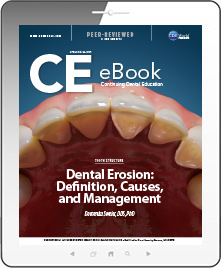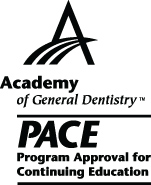CDEWorld > eBooks > Dental Erosion: Definition, Causes, and Management


ADA CERP is a service of the American Dental Association to assist dental professionals in identifying quality providers of continuing dental education. ADA CERP does not approve or endorse individual courses or instructors, nor does it imply acceptance of credit house by boards of dentistry. Concerns or complaints about a CE provider may be directed to the provider or to ADA CERP at www.ada.org/cerp/

Approved PACE Program Provider. FAGD/MAGD credit. Approval does not imply acceptance by a state or provincial board of dentistry, or AGD endorsement. 1/1/2023 to 12/31/2028. ID # 209722.
eBook
Released: Thursday, April 18, 2019
Expires: Saturday, April 30, 2022
Dental Erosion: Definition, Causes, and Management
By Domenica Sweier, DDS, PhD
Commercial Supporter: GlaxoSmithKline
This article will discuss the characteristics of and factors contributing to dental erosion, along with management and treatment methodologies for the condition available to the dental healthcare provider. Dental erosion is a common concern, defined as the permanent loss of tooth structure related to acid exposure, either extrinsic or intrinsic, that does not involve microorganisms. Typically, erosion occurs with coexisting factors. It can be a challenge to diagnose because of similarities to other categories of tooth wear. Signs, risk indicators, and protective factors will be discussed.
LEARNING OBJECTIVES:
-
Identify dental erosion risk factors.
-
Recognize the relationship between dental erosion and coexisting factors.
-
Educate patients on prevention of dental erosion.
-
Describe management of dental erosion and comorbidities.
About the Author
Domenica Sweier, DDS, PhD
Clinical Associate Professor
University of Michigan School of Dentistry,
Ann Arbor, Michigan


